Some new musics
Hi!
Here’s a few things I’ve had on rotation!
Torrey - Bounce
MJ Lenderman - You Have Bought Yourself A Boat
Nick Harley - Circus
Dancer - Chill Out
Hi!
Here’s a few things I’ve had on rotation!
Torrey - Bounce
MJ Lenderman - You Have Bought Yourself A Boat
Nick Harley - Circus
Dancer - Chill Out
Hihi! new edition of my regular monthly radio ..
Much thanks to all the organizers for another awesome Eulerroom live stream for Solstice Stream 2023.
Here’s my Soundb0ard set from the show (a retake as my actual broadcast mistakenly missed the code):
Oh yeah!
11th November, get it in yer calendar -- StokeFest
Super stoked for STOKEFEST!
We've been working with Surfrider Foundation and Great Highway Park to put together an upcoming event called Stokefest. Happening on the Great Highway, at Judah, on November 11th!
We'll have a table and and a new issue of B0ardside, issue 7!
Amazing new album and vid from Usof!
Some friends of mine in Glasgow just saw this performance at the Tramway, it looks pretty ace!
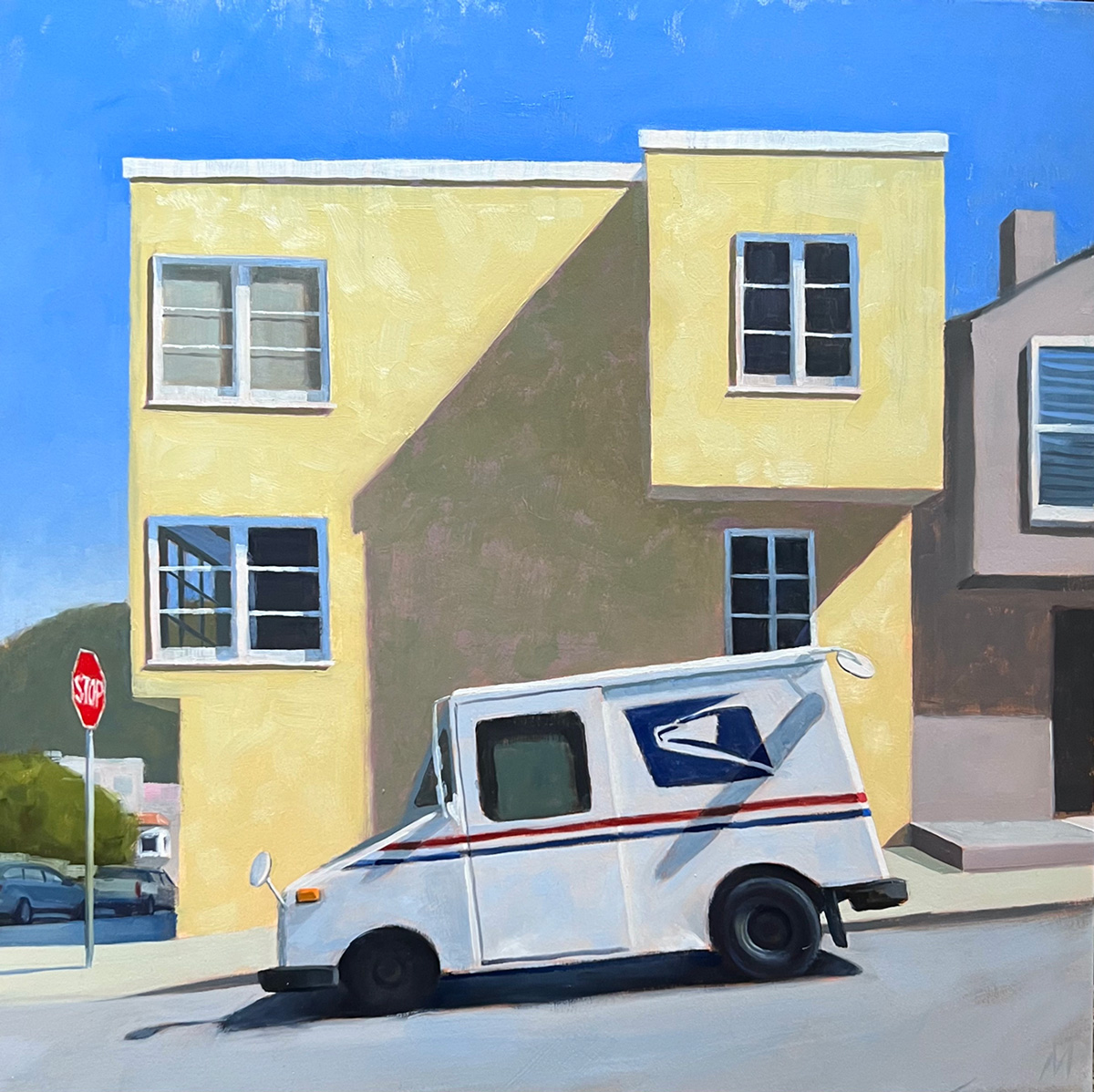
I’m standing on a bridge over the Canal Saint-Martin right now there’s a lock that’s filled with water, but I don’t see a boat. It’s amazingly peaceful. It’s early morning here, so I assume there’s not too many people around.
We’re right in the 10th Arrondissement. The canal goes south, to the 11th, and connects with the Seine. I imagine it used to be much more of a commercial link. Barges and stuff. Not too many right now. We saw an amazing pleasure craft with these very well heeled people just sitting out on their deck drinking wine.
A little sketching. I was determined to do it every day, and I haven’t done it. It’s a little tricky because we’ve had family members come to visit, we’ve got our dog here. We want to get out there and do all this stuff. I am taking a shitload of photos. That’s what I use, generally, for my paintings. A handful may make it to the canvas. I like the wide open skies and also these narrow corridors. I’m definitely finding some beautiful stuff.
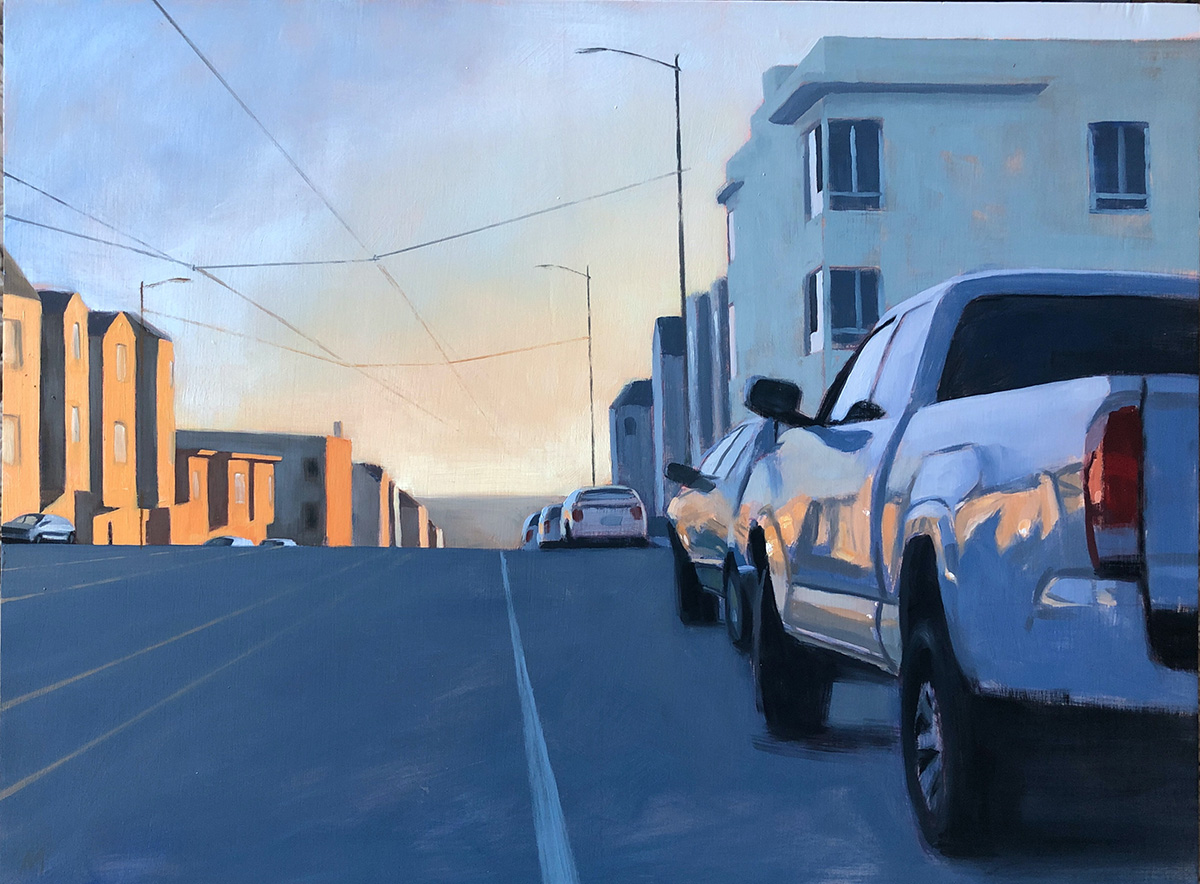
Well I appreciate you saying that. Especially the Thomas Kinkade reference.
[Laughter]
I don’t ever really think consciously about painting the light. I just respond to what captures my interest. As an artist, I’m sure you go around and you come around some corner and you go, Wow, look at that. Yep. Yep. That’s amazing. Somebody should paint that.
And, really, I haven’t painted many other places. I started painting in San Francisco, and I was blessed, as we all are, by living out there. Being able to bask in that glorious light of the Sunset, especially on those amazing clear days when the shadows are crisp and everything, it’s just a joy. I was gonna say I feel a responsibility to paint it. Not exactly, but…I’m in just such a fortunate position to be able to do it. And I love doing it. As time goes on, and people say nice things to me about my paintings, I do feel kind of a sense of responsibility not to waste it.
Life goes by, people live and die. We’re not gonna be here forever. What kind of so-called legacy other than my two children would I have?
Yeah, you know, you go to these museums here, and...we were at the Picasso Museum the other day, and — the guy was just a force of nature, you know?
It seems like he got up every morning and just said, what am I going to create today? Whatever he wanted — ceramics or painting or metal work or whatever. That inspired me to, you know, maybe try some new things. Break out of the old patterns, painting cars and buildings in the Sunset.
Thank you! Well, you know…if I were someplace else, would I be, would I have started painting? San Francisco just forced me to stop fucking around and do something. I have to give credit to the place itself. I just feel like we are all so lucky to live out there.
I grew up in Florida, got a degree in art from the University of Florida, but it was focused on graphic design. Because I didn’t have the balls to say, Hey, I’m gonna be a painter. I felt I needed to be a little more practical than that.
I dabbled, I did things from time to time and it was always like in the back of my head that I really needed to somehow stop farting around, find some discipline and get down to it. And, after moving to San Francisco in 1980, I finally did — in the summer of 2001. So I haven’t been painting all that long.
Yeah, man, I’m super lucky. Super lucky. Being in the Sunset, of course, and still living there day, you know, you have a true appreciation of the unique character and the beauty and the light. That definitely inspired me.
I live in Golden Gate Heights. And I’d drive out to the Outer Sunset to take our younger daughter to the co-op nursery school right there at the beach, on Lawton. Driving straight out there, a daily trek, to and fro, being sleep-deprived. The Empty Mind. Really, I think that was kind of a big deal for me.
Maybe so! You know, like, I never had really thought about that too much before right now. I would drop my daughter, and when I got back to the studio, because I knew I had three hours, that’s when I was really getting going, and I had this sense of urgency about the time. I knew that was going to be my only time, you know, those three hours. I would really devote myself in those mornings, and yeah, that, that really got me going.
Here, in Paris, I’m standing beside this canal. This is a place I‘ve been to a bunch of times since we’ve been here. I’m just waiting for the light. It’s sort of a patchy, warm blues and clouds, and the clouds are kind of wispy, so they kind of go in and out. Right now, at this moment, there’s a clear shot of the sun on these building. I’m gonna get on my camera while we’re talking, and take a picture.
The other person that comes to mind, especially since I’m in France, is the photographer Henri Cartier-Bresson. Cartier-Bresson was working for a Communist newspaper in the 1930’s. Le Soir, I think it was. And they sent him to London to cover the coronation of King George V. He went over, and he took this amazing set of photographs. Not one of them of the coronation.
They were all of the regular people lining the parade route, trying to get a glimpse of the king. Fantastic. Just like this incredible array of faces and training nets and people looking through those little wooden periscopes. And I don’t know, it was just beautiful. He saw what was important. And the thing about Cartier-Bresson that always sticks in my mind is the anticipation of the moments, you know? Being ready. Being ready when the moment occurs.
And you know, I definitely do that too, like some place in the Sunset where I’ll suddenly think, Oh, that would be great at a certain time of day, or when the light’s like this. And I go back until I get the right image.
You just manage to be there. I mean, it’s, it is as if we know that it’s a little more complicated. You have to get some source materials, maybe source images and bring them back to the studio, but it’s as if you just happen to be there with your brushes and your canvas at exactly the moment when the light is just perfect.
That’s at least the impression that’s given, and that’s the important thing.
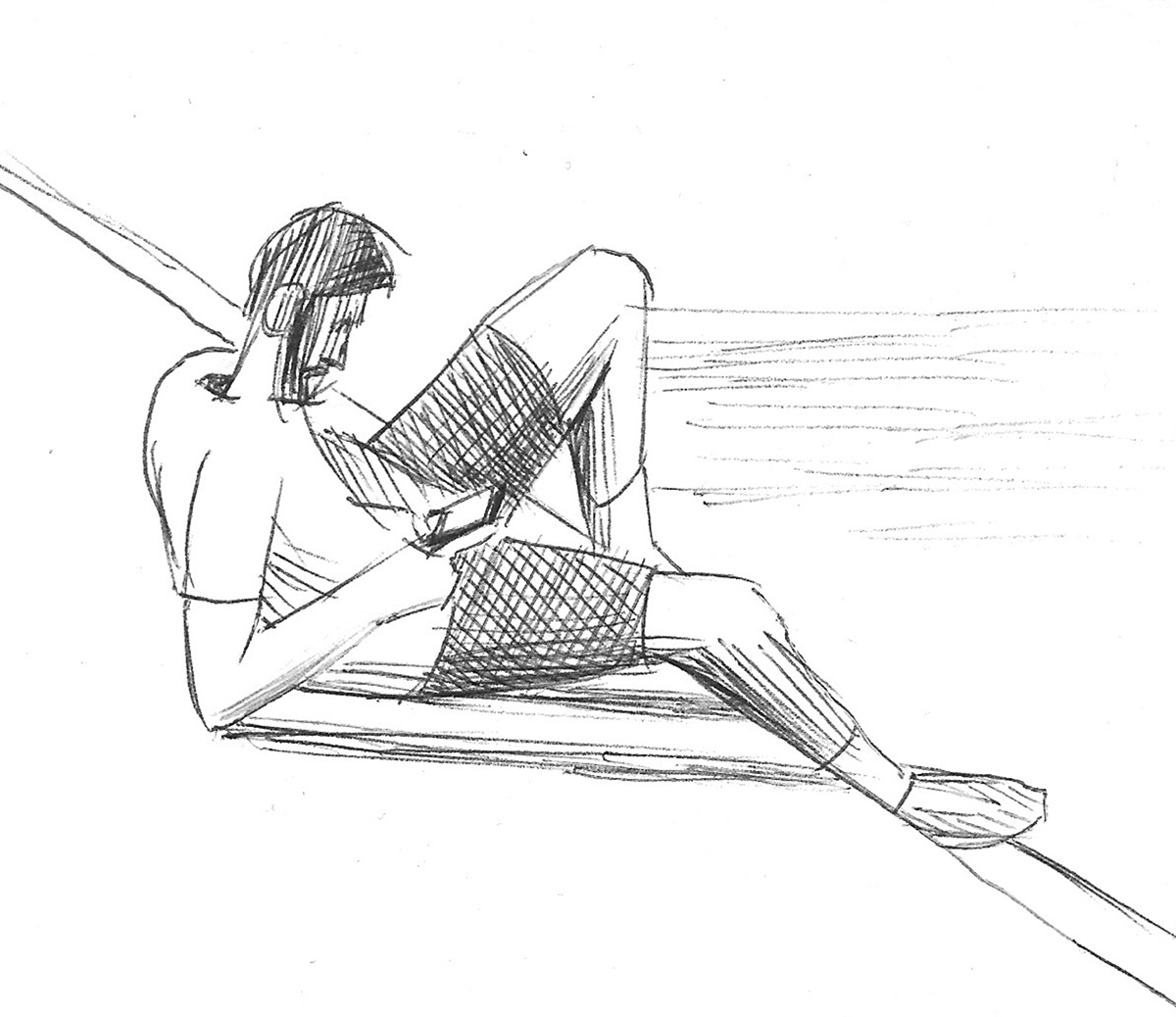
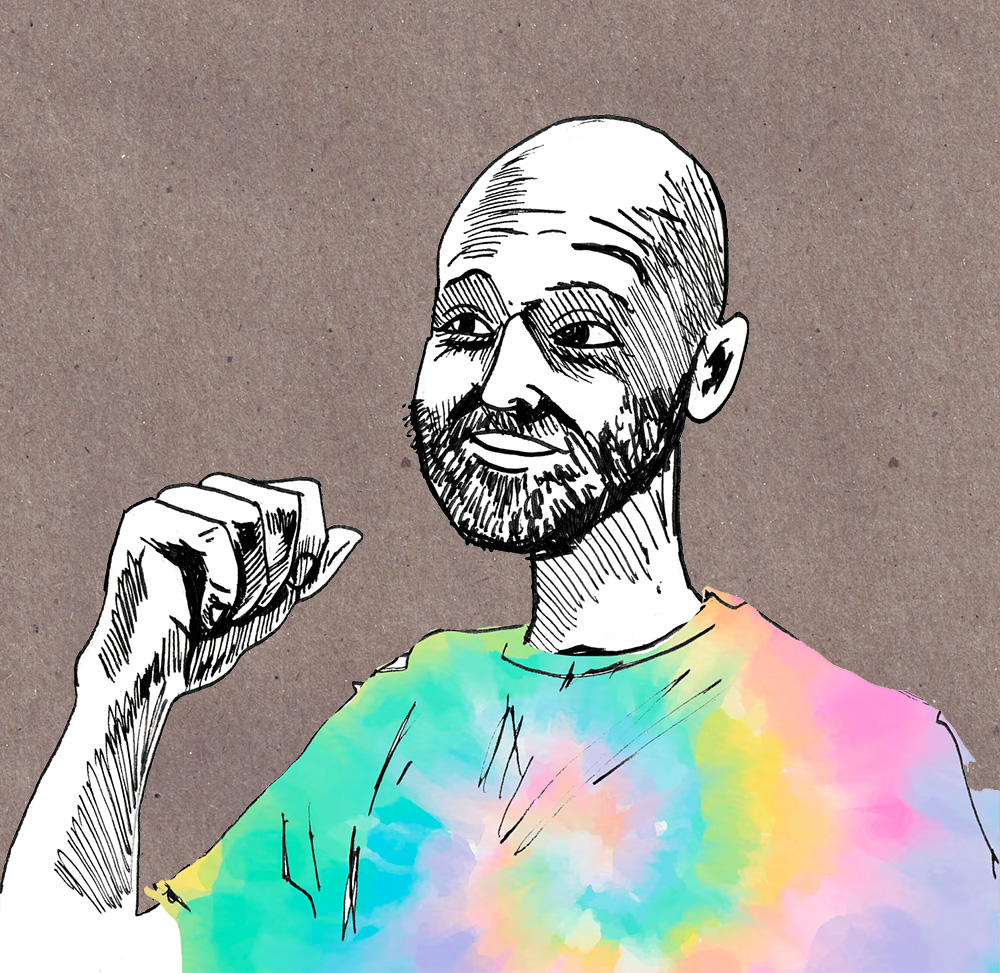
For B0ardside6, we have a backyard installation of analog video synthesis, by Sean Russell Hallowell a local composer and audiovisual artist.
I first met Sean at an AVClub SF meetup, hosted at Syzygy, an awesome community art space in the Mission district. His talk stood out from the crowd of digital artists, as he was demoing his custom analog video synthesizer. Amazingly it turns out, he was actually quite new to the world of video synthesis, having thrown himself into learning how to build circuits during the pandemic. His background is in the history and literature of compositional tradition in European music of the Middle Ages and Renaissance! “the phenomenology of time in relation to those divisions of Medieval philosophy known as the quadrivium — i.e. music, arithmetic, geometry, and astronomy.”
Ok! Middle Ages and Renaissance! Tell us about your background first!
Yes, it all starts with Pythagoras. Been a musician all my life, played guitar and saxophone growing up. From the Pacific Northwest, so I listened to a lot of grunge. Went to college not knowing what I was getting into and a few rabbit holes later got a PhD in Medieval music theory. On one hand I was reading a lot of literary theory and philosophy, and on the other I was discovering music on the “experimental” end of the “classical” spectrum.
In particular I was listening to a lot of Modernist stuff that, I soon learned, has more in common formally with French and Flemish music of the 15th and 16th centuries than anything that came right before it. It so happens that, against all odds, that music (i.e. vocal polyphony from France and the Low Countries for Catholic religious rites) slays, and sounds awesomely alien if all you’ve ever heard are tonal progressions in 4/4 time.
To seal the deal, I was brainwashed by Medieval music theory, which is more physics-plus-self-help-doctrines than it is recipes for how to compose. Medieval theorists all explain the power of music in terms of cosmic harmony, sympathetic vibration, spiritual attunement, and so on – which is, if I may say so, objectively true. So I don’t see how it could have gone otherwise for me.
And how did you get from Quadrivium to Video Synthesis?
Basically a convergence of otherwise random threads. Growing up in the 80s and 90s I am hardwired to be hypnotized by cathode-ray tube TVs. At some point I got into building my own audio synthesizers, which for experimental reasons I started plugging into CRTs. This is how I had the realization that the same voltage that makes a speaker jump can also make patterns appear on such a monitor. There’s a bit more to it than that, of course, so I went deep and read all the technical manuals I could find for analog video gear from the 70s and 80s. Eventually I taught myself how to generate the type of signals needed to make a CRT happy. The more I worked like this the more I realized that what I was actually doing was “visual music.” You can generate patterns that manifest as one aesthetic phenomenon in one domain but may appear as very different phenomena in another.
All this coincided with an artist residency I had in summer 2021 in the Icelandic town of Ísafjörður. I lived there for two months taking audio and video recordings of the natural environment. At the end of my residency I staged a large-scale installation incorporating my first hand-built synthesizers. That work mixed synthesis patterns with all that natural footage, which got me onto this idea of isomorphism between micro-temporal (video synthetic) and macro-temporal (geological) structures. Which is, of course, very Medieval.
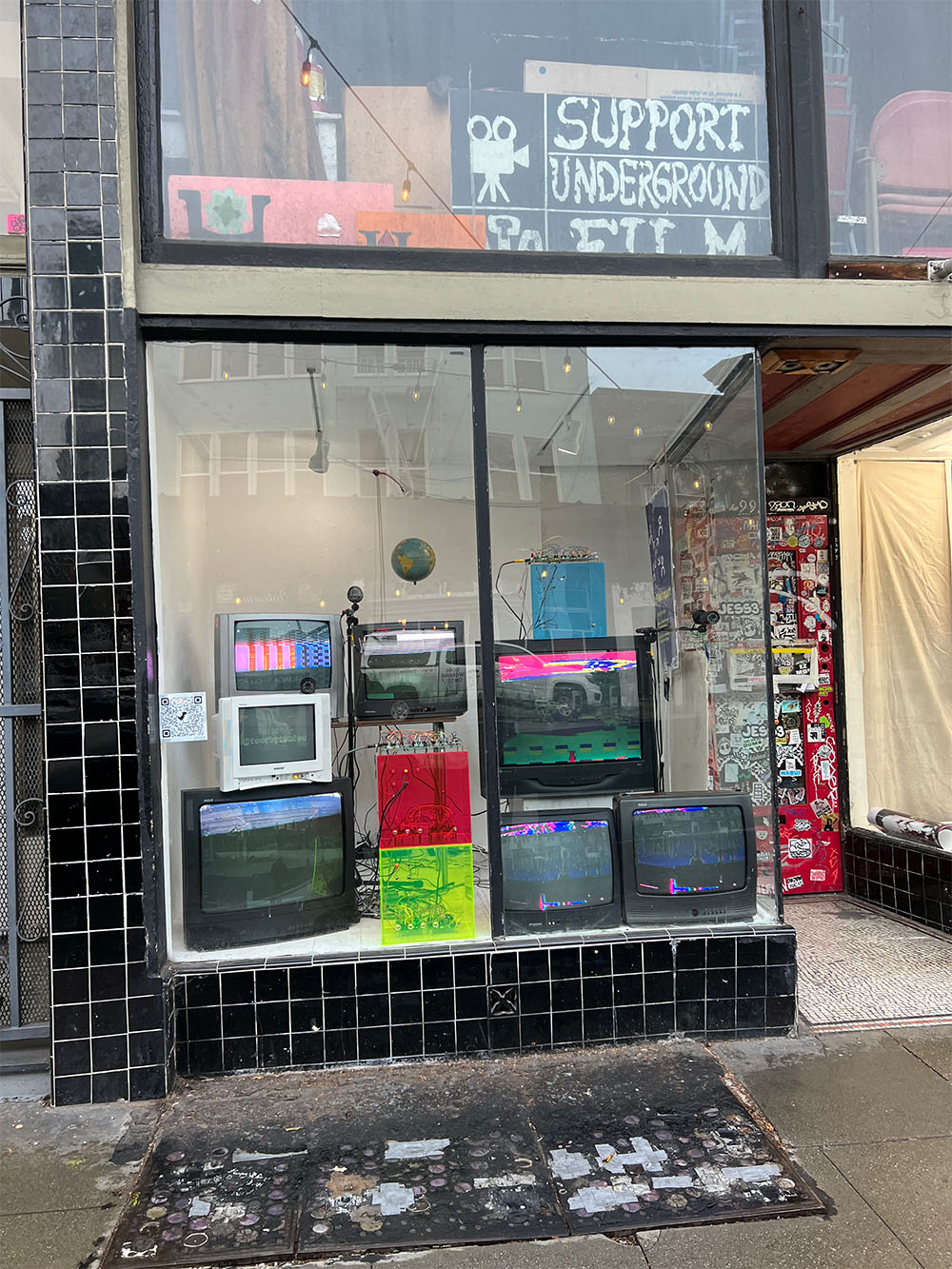
When reading your background, I see you recently worked on restoring a Sandin IP - I had to look up what that was - Dan Sandin built the first video synthesizer in 1973 - “as a modular, patch programmable, analog computer optimized for the manipulation of gray level information of input video signals..“ I love finding out technology origin stories! How did that project come about? Can you tell us a little about the background of the Sandin Image Processor and its importance in video art?
Yeah, I have worked on a couple IPs at this point – one at a place called Alfred University in New York state, the other at the School of the Art Institute of Chicago. Basically the IP is the first real tool for analog video art, designed and constructed back when composite video as a signal architecture was still a new thing. As you mention it’s basically a modular synth that processes external video signals along with on-board oscillators to produce a wide array of luma and chroma effects. I had actually never heard of it before I built and designed my own modular video synth from scratch, because I tend to be an ostrich about things I’m working on. I was teaching an analog video workshop and one of the participants (fellow video artist Stephen Radley) told me about the Alfred IP and how it had a broken color encoder.
Being uniquely qualified to build a new one, I went out for a couple weeks and got the feel of the machine. When word got out that I had fixed the Alfred IP I was contacted by SAIC which also, it turns out, had an IP with the same problem. So I built an encoder for that one, and have since been back to service it as well. IPs were built from scratch by art departments at universities back in the 70s and 80s and only a handful of working ones survive. So it’s a real privilege to work with them now, and great to see the machines actually getting used by people who are new to video art.

You mentioned you were also in bands while you were in academia. What kind of music were you making? Rhode Island had an awesome art rock scene around the 2000s with Lightning Bolt and Black Dice - did your time at Brown cross over with that scene?
It did! Saw Lightning Bolt live more times than I can count – still listen to those records. My band back then was called the Stay at Home Dads – somebody once described us as demented circus rock. We played at all the local venues and a few more underground spots around campus. Providence was (and still is, I hear) the place to be.
How do you see the connecting dots between video and sound, technology and space?
Not sure how I can answer such a good question without writing another dissertation, but here it goes: I aim to bring auditory and visual phenomena into dialogue in such a way that you experience them differently than if they had been presented on their own. This usually involves playing with synchronicity and asynchronicity in ways that make you interrogate notions of causality and simultaneity. For instance, questioning if a sound caused an image, an image caused a sound, or if they were causally unrelated. This has parallels in Medieval music too. There are some textures that are closely coordinated among all the voice parts, and some that feel random – though these latter are usually the result of some underlying processes that have their own logic, just not one audible at surface level.
It is of course possible to explore all these things in a fixed media work, but when it’s situated in a specific space there’s another dimension to the experience. As for technology, without opening too big a can of worms I’d say I’m always keen to highlight how technique and technology are mutually reinforcing. The tools you use have a determinant effect on what comes out of the artistic process. I use this to remind myself to let go of the myth of a blank slate and accept that everything starts from something.
You use handbuilt circuitry - how important is it in your work to build your own tools? Is it a DIY philosophy or are you driven more by the enjoyment of learning?
Definitely both. At the end of the day, I just can’t get into certain tools that are commercially produced. There are exceptions, like the keyboard that I used growing up, which has all those great 80s drum presets that I’ll never get sick of. But with video, so much of what drives my art is encountering the technology at its most basic level and building things from the ground up. Effects and techniques that I rely on extensively grew directly from learning how to alter fundamental properties of a video signal to produce specific results. As I’m sure you feel about your custom system for audio synthesis and performance that you built, at a certain point you want to decide what you can control and what you don’t need to control, and there’s no other way to achieve that other than doing it yourself.
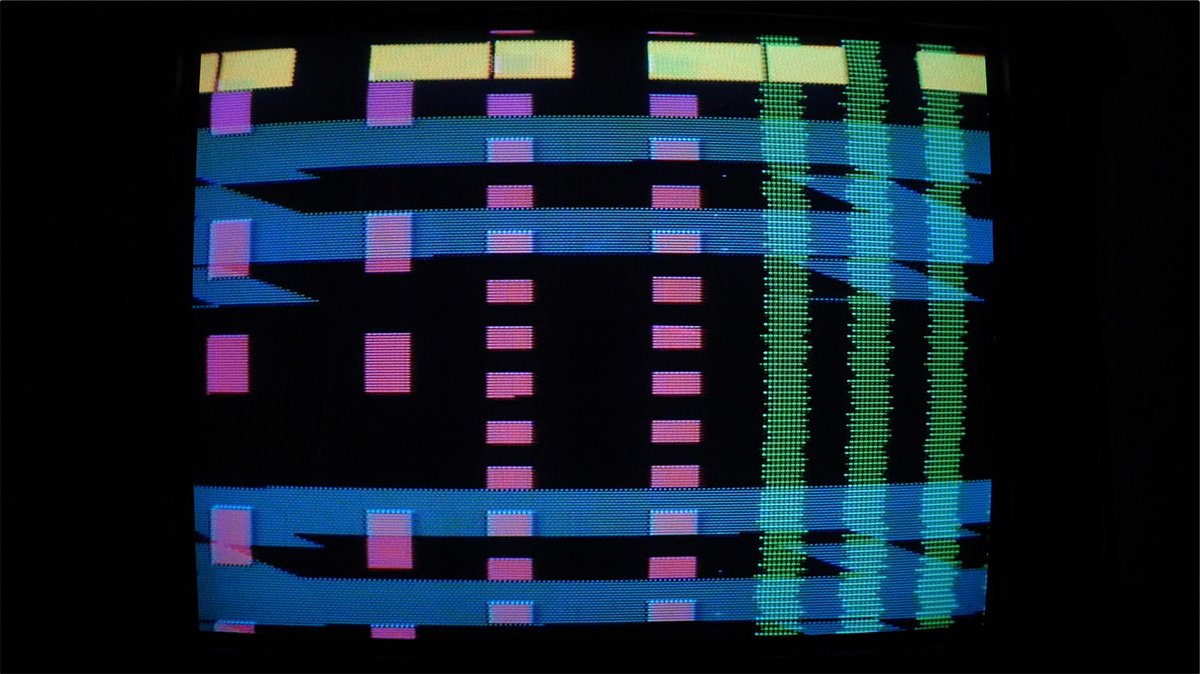
How do you approach installation work differently from a system for live performance?
The number one difference has to be attentiveness to the environment. Sure you have to optimize your set for a venue or whatever but when it comes to an installation the big thing for me is always to see how I can work with what I already have. In that Iceland installation I mentioned, the venue had a bunch of full-length dance mirrors sitting around that I used to make an immersive space around my CRTs and multichannel speaker setup. Similarly, in an installation I did at Artists’ Television Access in SF, I was working in a window gallery that offered an opportunity to arrange TVs more sculpturally, which I let guide the composition.
How has San Francisco shaped your relationship with art? What about the Sunset neighborhood?
Well, having grown up in Oregon I’d say the natural environment in this part of the world is baked pretty deep into my bones. Nature as cosmic music, etc. As for San Francisco the city, for the longest time I didn’t really feel a part of any scene – it was through AV Club (which you know well!) that I started connecting with more like-minded artists. This has been great because although my stuff isn’t properly “digital” I still find the analogs between what I do and what digital artists do to be very thought-provoking.
As for the Sunset, at the risk of outing myself, I’ve actually just moved to the North Bay after six years in the middle Sunset (first on Judah, then off Noriega). This 100% for more space reasons, since I have always loved and will always love the Sunset. Living that close to the beach, walking the Great Highway, feeling the fog roll in, that was my way of tuning in every day to the music of the spheres. Since the ocean is just an instrument being played by the moon’s gravitational pull, that is. Again, a very Medieval reason.
You’ve built your own platform for online learning, running a series of live art and engineering courses. Can you tell us more about how that began, the range of courses, and what’s planned for the future?
For sure. I do a couple of different things in terms of teaching art and electronics, ranging from workshops about circuit bending and audio synthesis to ones about analog video processing. My interest in teaching comes from the fact that “engineering” and “art” are things that you can learn separately but are not usually taught in a mutually reinforcing way. The idea when I teach is always to highlight the artistic aspects of engineering your tools and the technical aspects of making art.
On the horizon are more in-person events, which I’m very much looking forward to. I find learning around others in a physical space makes a big difference – especially when it comes to electronics. Leading workshops will always be a part of my artistic practice since I learn as much as anyone else does through running them. Being self-taught, I feel I don’t really understand something until I have to explain it to someone else.
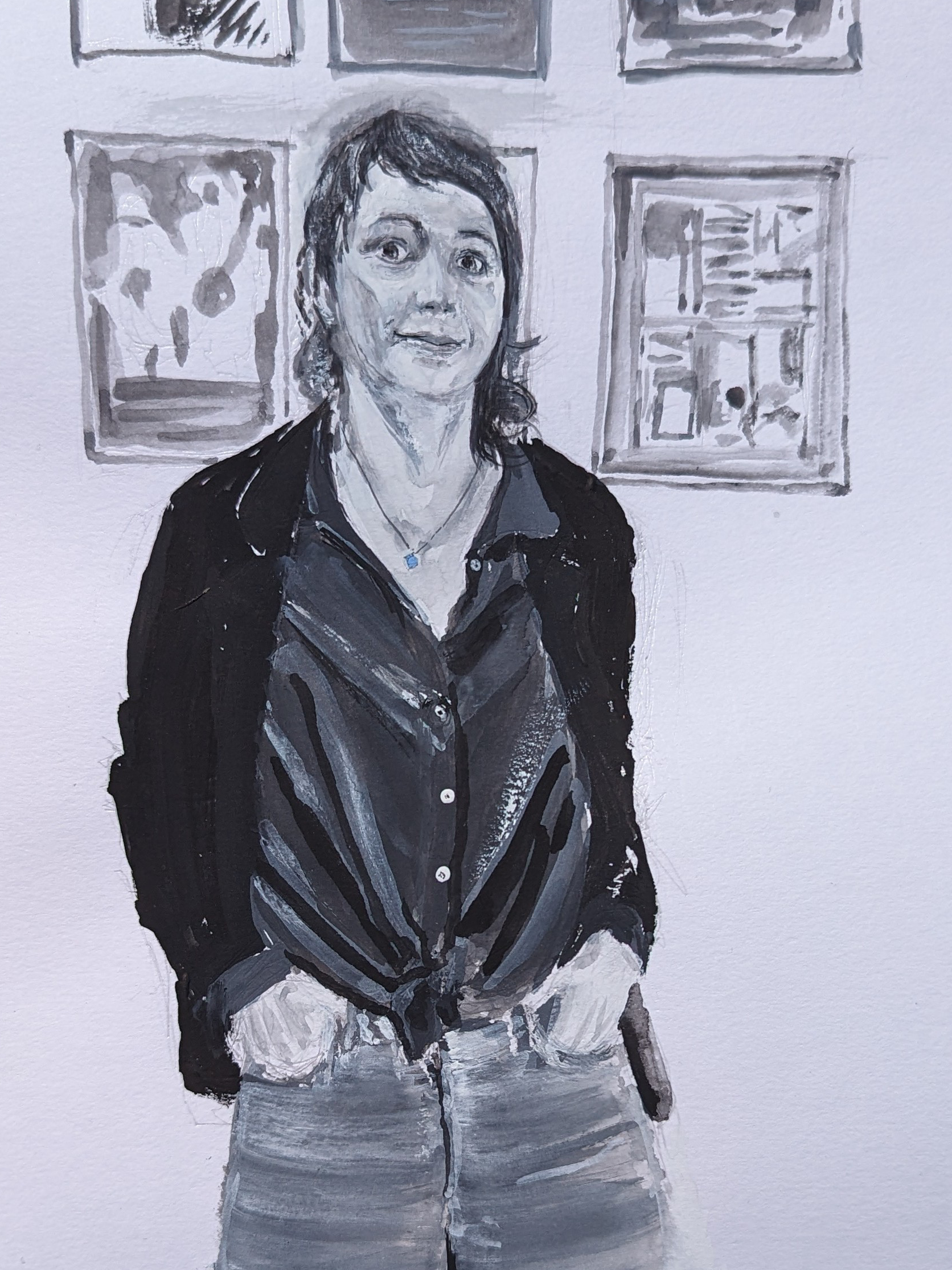
B0ardside recently popped into SEALEVEL and sat down for a chat with Jeana Loraine, the owner of a new art gallery and creative space nestled in the middle of the Irving business corridor that stretches between the Great Highway and Sunset Blvd.
Tell us about yourself and how you landed at Sealevel on Irving Street in the Outer Sunset?
My husband and I moved here a little over 10 years ago from Switzerland. We were looking for better job opportunities for him as well as adventure and so we pretty much got rid of all our stuff, packed two little bags, and came here. We ended up in the Outer Sunset because that was the only place we could afford. We ended up out here and did not like it in the beginning because it was cold and foggy and rainy, and I’d never been to this part of the city. It didn’t take long until we completely fell in love with the Sunset with its kind-of surf town charm. Yeah, we’ve been hooked ever since.
Then during the pandemic, I was fortunate enough to take over this space I’m in now, Sealevel. It started out as a shared workspace with some neighbors. But since this year, I’ve been promoting it as my workshop, and in the evenings and on weekends, it is a community space.
What inspired you to open a creative space like this?
This is something I’ve always wanted ever since I can remember. I always wanted to have my own space. I’ve worked for a music venue in Zurich, Switzerland for about twenty years now. And when I first came to that place, I felt like I had found my home, my port in nautical terms. When I was working there, I really enjoyed working in hospitality and bringing people together and organizing music shows and I just loved how it made people happy. I always thought someday I would have my own bar or restaurant or something, then when I found this space here, I realized that it doesn’t have to be a bar or a venue. It can just be like a living room where people can come and hang out and get to know their neighbors, a place where people can come together and exchange ideas and resources. I love when people walk in and ask questions like “what is this?” I’m really enjoying just bringing people in the neighborhood together where new connections are made, and new ideas are born.
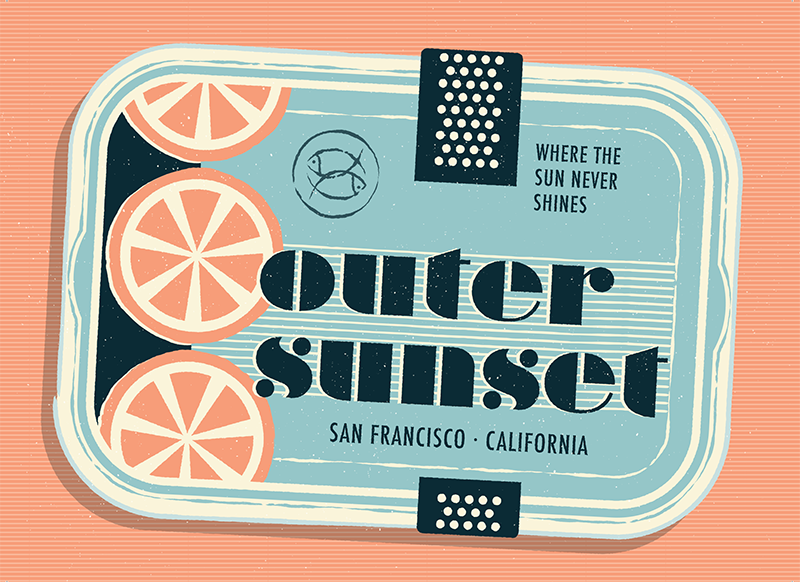
That’s great. So you have a graphic design background and you do the posters for the venue in Switzerland? How did you get involved with that? They are fantastic.
Thank you! I went to art school in Zurich and went through their graphic design program, and I ended up working in a few companies, but I was working as a waitress at the venue so I started doing their posters. And then I came into management and started booking the shows. But, the great thing was that I had free reign on the creative direction of the posters. So I was allowed to develop my own style.
They really capture a mood in a place and time, kind of a nautical era-retro look.
I feel really drawn to the ocean and there is something nostalgic about the ocean to me, or something like yearning. That’s something I try to bring into my illustrations as well. There is always a story behind each one.
You now have an art show up on the walls, Summer in the Sunset. This is your first show at Sealevel. How has the experience been for you so far?
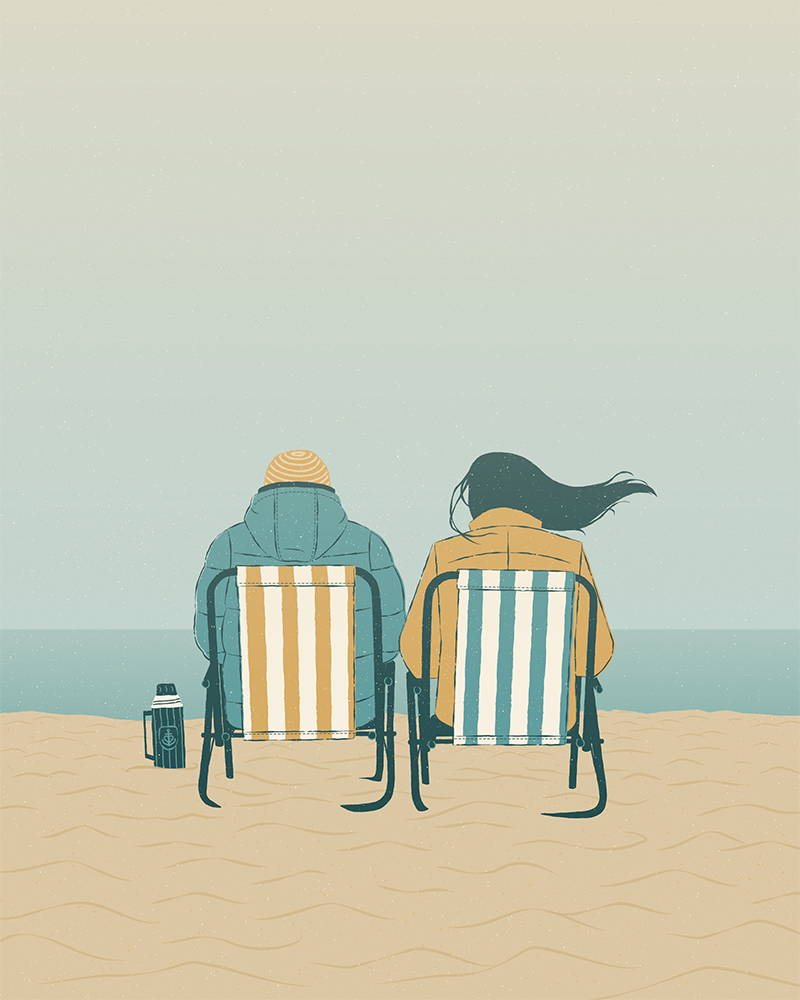
It’s been great! We have 19 local artists in this show. I was not expecting to have that much interest since it’s the first show we’re putting on. But I’m really excited about it and everybody in the show is just fantastic. The opening was a huge success. I knew there would be people, but I was not expecting that many people. The few days after I would go out and people would come up to me and be like, Oh, I missed the show, but I heard it was amazing. So it kind of felt a little bit like the talk of the town.
This little Irving corridor has several businesses. What else is on these few blocks?
There’s actually been a lot happening recently. There’s Sunset Fit, or Fitness. a new little gym that opened. Sunset Auto Care. This new bakery that opened, Daymoon, which is fantastic. Palm City, a wine bar, and then there’s Clancy’s which is a neighborhood staple, and, Swell Bicycles. A doggy Bath O Mat, Avenue Dry Goods, which is also a little shop that has a lot of knick knacks from many local people, Blackbird bookstore and Hookfish, The Last Straw.
So along with the art gallery, what is your vision for this space?
So right now we have an open mic monthly hosted by Sami Freeman who is a local musician (Her husband Matt is a carpenter and he built the workshop tables for Sealevel); Jeremy Greco from Other Avenues is going to perform his solo theater show The Big Snap in September; and the next art show opens October 14; then a holiday market throughout December with all local makers. And starting next year we will have March, June, and September art shows. June always being Summer in the Sunset, with only sunset artists. And besides that... I also let people come in and teach classes. We’ve had some writing workshops and herbalist workshops. Possibly watercolor or sign painting, also a cyanotype workshop. So there will be all different kinds of things going on.
What is the next art show going to be?
The next show will be with the Sunset Sketchers group show, October & November. During the art shows we have a Friday happy hour from three to six, so come hang out!
Interview by Brent Willson.
Jeana illustration by Douglas Gorney.
Other illustrations by Jeana Loraine.
SEALEVEL is located at 4331 IRVING ST.
Originally printed B0ardside6.